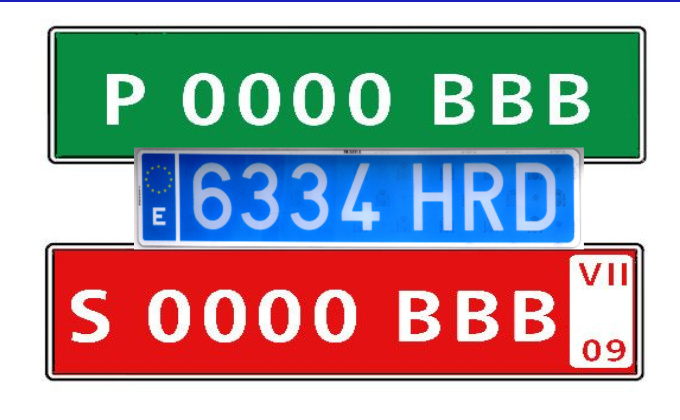You may have noticed that taxis display blue number plates on the back of their vehicles. It is not only marked and branded taxis that display them, but also VTC vehicles (Vehículos de Turismo con Conductor), which are effectively private hire or chauffer driven cars, a taxi by another name but more restrictive as to how it can operate.
The objective of the blue number plate was to clearly identify legally licenced taxis and VTC vehicles, and, more importantly, highlight “pirate” taxis operating in certain areas. The clear definition of a taxi of VTC is to provide transport services in exchange for money, goods or services. Anyone doing this in a private vehicle is therefore, by definition, a taxi, and operating illegally, without insurance, in the event of carrying passengers without the correct registration.
Companies such as Uber and Cabify are operating in certain areas of Spain, these vehicles will also adopt the blue number plate, as they are classed under the same rules as VTC vehicles.
The move also brought Spain in line with other countries in Europe, some of which already have a similar distinction in place.
The regulation now obliges all vehicles with a taxi or VTC licence, with up to 9 seats, to display a blue number plate on the rear only. On the front, the ordinary, black letters on a white background is required. As with all number plates, no alterations or modifications are permitted.
In order to obtain one of these plates, the vehicle owner must provide proof of the legal status of the vehicle, so it also serves as a security for users that they are in a compliant and legal vehicle.
OTHER COLOURS
If you see a red or green number plate, this is a temporary registration whilst the permanent process is being carried out, such as would be the case if you were to transfer a British registered vehicle to Spain.
There are also red and green number plates used by the Diplomatic and Consular bodies respectively and accompanied by the acronym CD and CC in each case.
There are also acronyms used to identify many types of vehicles, especially those of the State Security Forces and Bodies: CNP for the National Police, PGC for the Civil Guard, CME for the Mossos d’Esquadra or ET for the Army, among others.
For the rest of us, we too must follow strict rules when it comes to displaying our vehicle registration. In Spain, it is articles 25 and 49 of the General Vehicle Regulations that specify the format and content that the number plate of any vehicle must have. It is not enough to be black letters on a white background, but it must be reflective. Only certain flexibility in the dimensions is allowed, considering three different sizes according to the characteristics of the vehicle. Since 2000 it is also mandatory to include the blue strip of the European Union with the initial of the country of registration, “E” in the case of Spain.


